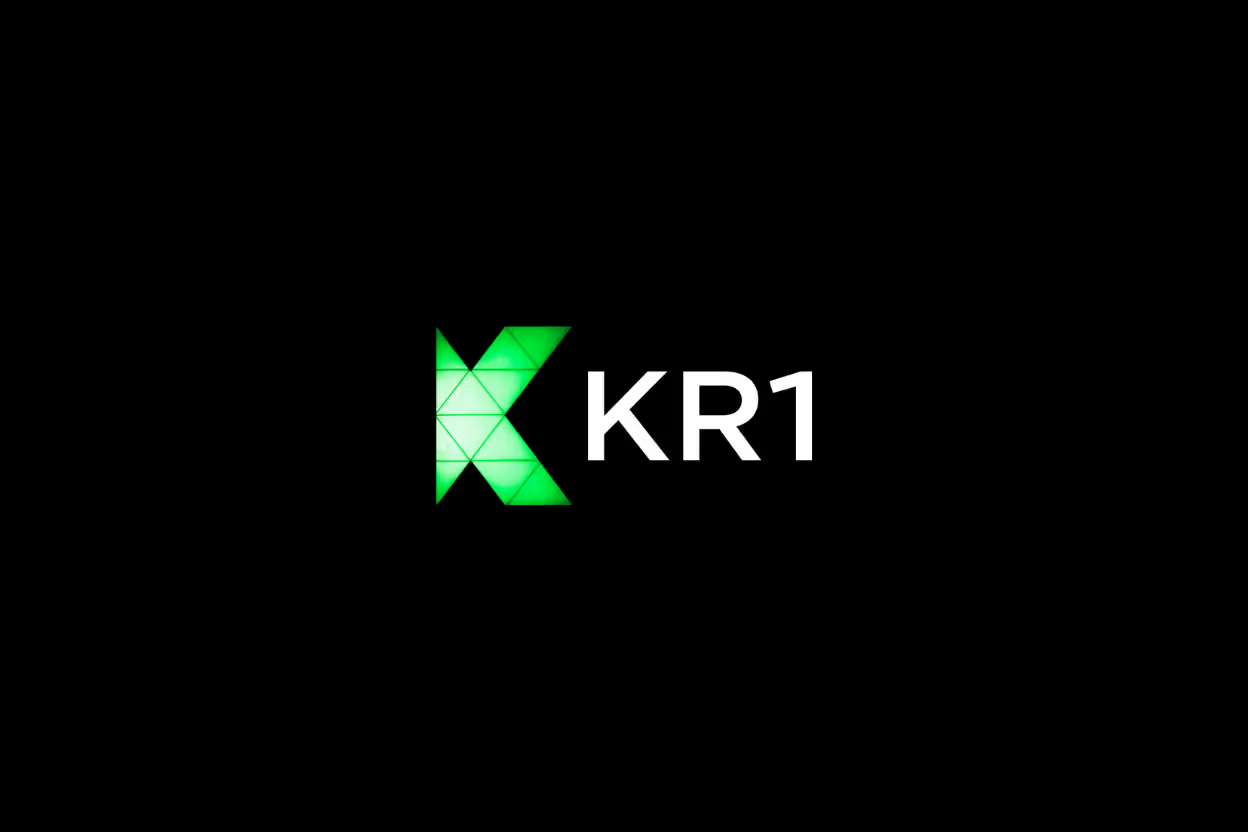Multisig wallets play a key role in protecting crypto assets by requiring multiple approvals before a transaction can be executed. They add a layer of security that helps prevent theft or unauthorized access, which is why many crypto founders and investors rely on them. When a multisig system fails, the consequences can shake the entire network’s trust and governance structure.
This post examines a recent multisig meltdown that affected a major network, exploring what went wrong and why it matters to leaders and decision-makers in crypto and web3. You'll see how even trusted security measures can become points of failure, and what lessons come from such events for anyone managing digital assets or building decentralized projects.
What is a Multisig Wallet and Why It Matters
Multisig wallets have become a cornerstone in managing crypto assets securely within organizations and communities. Unlike traditional wallets controlled by a single private key, multisig wallets distribute control across multiple parties. This setup demands multiple approvals before any transaction proceeds, adding a layer of security and collective governance. Understanding exactly how these wallets work and the balance of benefits and risks they carry is key for anyone involved in crypto governance or asset management.
Mechanics of Multisig Wallets
At its core, a multisig (or multi-signature) wallet requires more than one signature to authorize a transaction. Think of it like a bank vault with several locks—at least a minimum number of keys must turn before the vault opens. This minimum number is often referred to as an M-of-N configuration, where:
- N is the total number of signers (or key holders)
- M is how many of those signatures are required to approve a transaction
Typical setups include 2-of-3, 3-of-5, or even more complex arrangements depending on the organization's size and tolerance for risk. For example, in a 3-of-5 setup, any three key holders must agree before funds move.
This structure spreads authority and reduces risk by preventing one compromised key from draining funds. The wallets operate on smart contracts or multi-signature protocols that verify these multiple approvals on-chain before transactions execute. This verification is automatic and transparent to all parties involved, enhancing accountability and reducing chances of unauthorized transactions slipping through.
Benefits and Risks of Multisig
The advantages of multisig wallets are straightforward but powerful:
- Enhanced Security: No single person controls the whole wallet, drastically cutting down theft risk from individual key compromise.
- Shared Control: Decisions about spending or moving funds are collaborative, which fits well with decentralized projects and joint ventures.
- Auditability: Because transactions require multiple approvals, there is a clear record of who agreed to what and when, creating transparency.
However, multisig wallets come with risks that every crypto founder and investor should weigh carefully:
- Coordination Complexity: Getting multiple signatures means delays and occasional operational challenges, especially if key holders are unresponsive or unavailable.
- Loss of Keys: If the required number of keys to sign transactions becomes unavailable due to loss or inactivity, funds can get locked permanently.
- Smart Contract Vulnerabilities: Multisig wallets rely on code, and bugs or exploits in the underlying smart contract may lead to unexpected failures or security breaches.
- Overreliance on Security Guarantees: Sometimes teams assume multisig automatically means safe, but it depends on key management practices and the quality of the contract code.
Multisig wallets offer a sound approach to balancing security with decentralized control, but they aren’t foolproof. Knowing how they work and the points where they can break down is essential for creating resilient financial governance structures.
Understanding these mechanics and weights leads us closer to why a multisig meltdown can shake an entire network’s trust, as explored in this article’s focus on a recent crisis in the sector.
The Multisig Meltdown: A Detailed Account
When a multisig wallet system fails, the impact isn't just about numbers on a screen—it touches the entire ecosystem relying on it. The meltdown we examine here highlights how small weaknesses can quickly escalate into large-scale failures. Let's break down what exactly went wrong and what it meant for everyone involved.
Triggering Factors and Vulnerabilities Exploited
Multisig wallets, while more secure than single-key wallets, depend heavily on both technical soundness and operational discipline. In this case, a mix of flawed code and procedural weaknesses set the stage for disaster.
- Smart Contract Bugs: The multisig wallet used a contract that didn’t properly validate certain transaction states. Imagine a security system that sometimes forgets to check an ID before opening the door. This oversight allowed attackers to bypass key checks under specific conditions.
- Insufficient Key Management: Some signers didn’t follow strict security protocols, such as regularly rotating keys or safeguarding them offline. This made it easier for an attacker to compromise a few of the required signatures.
- Timing and Coordination Gaps: The attack exploited the natural delay in collecting multiple approvals. Because transaction signing was asynchronous across participants, attackers were able to insert malicious transactions during these “windows” of approval delay.
- Poor Recovery Planning: Once the vulnerability became apparent, the network lacked clear emergency protocols, delaying response and mitigation efforts. This delay worsened the situation.
Breaking it down for non-technical readers: it’s like having multiple locks on a door, but one lock’s mechanism is faulty, and some keyholders leave their keys lying around. The attackers found the faulty lock and also convinced or tricked some keyholders into handing over their keys, opening the door wide.
The core failures boil down to a combination of:
- A contract that didn’t enforce rules strictly.
- Human errors in key handling and approvals.
- Weak processes to catch and stop attacks quickly.
You can see how this trio of issues created a perfect storm.
Immediate Consequences for the Network and Users
The fallout was swift and harsh. In the hours and days after the meltdown:
- Loss of Funds: Large amounts of assets were drained from the multisig wallet, impacting projects and investors relying on those reserves.
- User Trust Eroded: Those who depended on the multisig for security felt betrayed. Questions around the integrity of multisig solutions surged, shaking faith in not only this network but multisig wallets in general.
- Network Disruptions: The attack triggered a temporary slowdown as developers scrambled to limit damage, patch vulnerabilities, and communicate with the community. Critical operations that depended on the multisig were stalled.
- Governance Gridlock: With funds compromised and key members cautious, decision-making slowed down dramatically. This disruption put ongoing development and upgrades on hold.
- Media Attention and Scrutiny: Public perception took a hit. Press coverage raised concerns about the robustness of decentralized governance and security in crypto.
If you've ever wondered why multisig wallets aren’t a guarantee against hacks, this incident illustrates the real risks hidden beneath their surface. It was not just a coding mistake—it was a combination of technical gaps and human factors that unraveled a system once considered safe.
The ripples from this meltdown extend beyond immediate losses. They sparked deeper discussions about how much trust to place in multisig arrangements, the importance of operational discipline, and the need for better incident response frameworks across networks.
This event changed how crypto leaders think about shared security controls, highlighting that even trusted systems require continuous vigilance and improvement.
Lessons Learned from the Multisig Collapse
The multisig collapse taught the crypto community some hard truths about both technology and human factors involved in shared security. It revealed gaps that technical savvy alone cannot bridge. To prevent such failures from repeating, the network had to rethink not only its coding and protocols but also how it runs governance and builds trust. Below, we break down the key lessons the incident highlighted and the practical steps now shaping multisig wallet security and management.
Improving Multisig Security Protocols
After the collapse, improving security was urgent. The meltdown exposed how even small bugs or lax operational habits can open doors to serious losses. What changes are making multisig wallets safer today?
Key practical steps introduced include:
- Stricter Contract Audits: Multisig smart contracts now undergo more rigorous third-party audits before deployment. This includes formal verification techniques to mathematically prove contract logic is sound.
- Standardized Key Rotation: Regularly rotating signing keys has become a standard practice to limit exposure from any single compromised key. Automated reminders and protocols enforce this process.
- Multi-Layered Access Controls: Beyond multisig itself, additional layers are added such as time delays on critical transactions or allowances requiring extra approval steps.
- Emergency Recovery Plans: Most multisig setups now include predefined fallback mechanisms. These can be used if signers lose keys or if suspicious activity is detected, minimizing asset lockups or theft.
- Improved User Interfaces: Clearer dashboards and notifications help signers track pending transactions and approval status, reducing delays and coordination risks.
- Education and Training: Both developers and signers receive better resources and training to understand their role in protecting assets and how to avoid common pitfalls like phishing or key mismanagement.
These improvements target both technical weaknesses and human operational errors that contributed to the collapse. They form a new security baseline designed to catch problems early and defend against evolving threats.
Governance and Transparency in Multisig Management
The collapse wasn’t just a technical failure—it showed how crucial governance and communication are to multisig success. When multiple parties must cooperate, how decisions get made and how much information is shared can make all the difference in trust and responsiveness.
Key governance lessons applied include:
- Clear Decision Protocols: Well-defined rules specify who can propose transactions, how approvals are collected, and how disputes are resolved. This clarity cuts through confusion when time is critical.
- Transparency of Actions: Public logs or permissioned dashboards provide real-time visibility into the multisig’s activity, helping all stakeholders see what’s happening and when approvals take place.
- Regular Reporting: Scheduled updates and audits keep the wider community informed, reducing uncertainty and reinforcing trust.
- Defined Roles and Accountability: Each signer’s responsibilities are clearly laid out, and signing decisions are recorded to hold individuals accountable for their approvals.
- Inclusion of Community Oversight: Some networks involve community members or independent observers to oversee multisig decisions, adding a layer of external oversight.
Transparency and governance practices don’t just protect assets—they build confidence. When users trust the process and see it working openly, they stay committed to the network’s long-term health.
By applying these governance and security improvements, networks can avoid repeating past mistakes. The multisig collapse was a wake-up call to the entire space: shared control demands shared responsibility, clear processes, and constant vigilance. Only when these are in place can multisig wallets fulfill their promise of secure, decentralized asset management.
How the Network Adapted and Evolved Post-Meltdown
After a major multisig meltdown shakes a network, recovery is never instant. The system needs to rebuild its foundations to avoid repeating mistakes. This means more than fixing code—it demands rethinking how wallets are built and how people work together. The adjustments made post-crisis demonstrate how security and cooperation grow stronger after testing times.
Upgrades in Smart Contract Design and Wallet Architecture
In the wake of the meltdown, the technology behind multisig wallets saw key improvements focused on preventing similar failures. Developers began applying tighter controls over contract code and wallet features to make exploitation harder, even under attack.
Here’s a closer look at what changed:
- Refined Contract Logic: Contracts now include more thorough checks and balances that match real-life scenarios better. This helps stop edge cases that attackers might exploit, such as race conditions or approval gaps.
- Modular Wallet Architecture: Instead of building one bulky contract as a “catch-all,” the new design splits responsibilities into distinct modules. This makes auditing easier and limits the blast radius if one module fails.
- Time Locks and Delays: Many wallets have integrated built-in waiting periods before high-value transactions execute. This gives signers a buffer to spot suspicious activity and respond.
- Multi-Factor Authentication Layers: Beyond requiring multiple signatures, some wallets add identity or device verification steps to shore up signer integrity.
- Fail-Safe Mechanisms: Developers included emergency "freeze" functions to halt transactions instantly if something unusual happens. This gives space to investigate potential breaches before damage grows.
Improving design meant questioning old assumptions about how multisig wallets should behave under stress. These changes aren’t just fixes—they signal a more cautious, layered approach to asset protection.
Community and Stakeholder Role in Recovery
Technical fixes alone would not have restored confidence in the network. The recovery required the entire community—from core developers to investors and users—to come together and rebuild trust.
Key elements of this collaborative healing include:
- Open Communication: Network leaders maintained clear, frequent updates during and after the crisis. Transparency about what happened and the steps being taken helped ease anxiety.
- Collaborative Governance: Decision-making moved toward more inclusive models, inviting multiple stakeholders to share responsibility for wallet management and security reviews.
- Security Awareness and Training: The community invested heavily in educating signers about secure key handling, phishing threats, and timely response practices.
- Incident Response Drills: Practice runs for handling attacks became routine, so teams were ready to respond quickly rather than scrambling in chaos.
- Feedback Loops: User and stakeholder input shaped wallet upgrades and governance reforms. This iterative process kept improvements grounded in real-world needs.
By involving diverse voices and encouraging active participation, the network created a culture where security isn’t just a developer’s job—it’s everyone’s mission. This shift made the system more resilient and aligned community goals.
Recovery after a meltdown isn’t just about patching bugs or rewriting contracts; it’s about repairing trust and building systems that reflect shared responsibility and vigilance. These moves laid the groundwork for a safer future, benefiting every user relying on multisig for asset security.
Conclusion
The multisig meltdown revealed how critical it is to combine solid technology with disciplined management. Strong security alone is not enough without clear governance and rapid response plans. Crypto founders and investors must treat multisig setups as living systems requiring regular review, key rotation, and transparency.
Building durable networks demands ongoing vigilance to catch weaknesses before they cause harm. Embracing rigorous audits, clear decision-making rules, and community involvement can restore trust and prevent future failures.
This incident serves as a reminder: shared control means shared responsibility. Moving forward, thoughtful security frameworks and cooperative governance will be essential for sustaining confidence and stability in crypto ecosystems.









